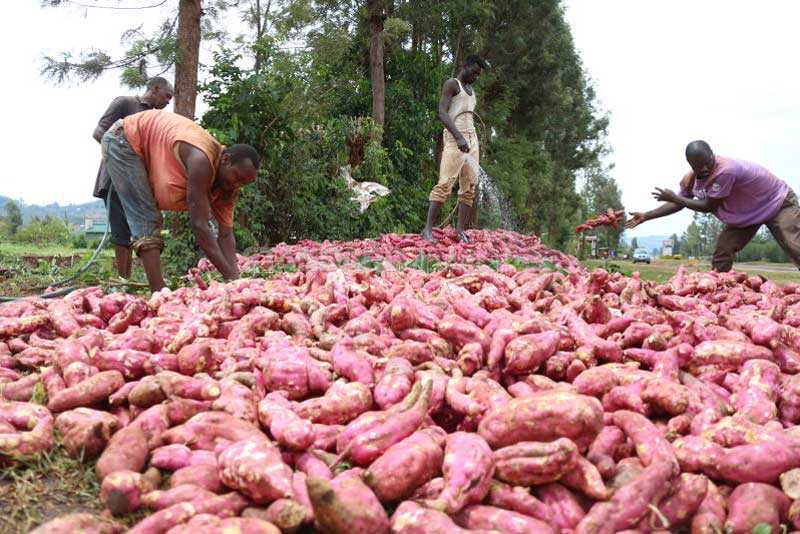
Sweet potato farmers in Kenya can now store their produce for up to seven months using a new cost free method called curing. This comes at a time research is indicating that sweet potatoes are going bad within a week after harvesting.
This innovative way of increasing the freshness of the produce allows for more time for commercial farmers to access far-flung markets while improving food security for subsistence consumers.
Sweet potato is gaining popularity in the in the commercial sector with opportunities for value addition increasing profits for farmers and processors.
Dr Sammy Agili says curing reduces post-harvest losses, recovery of investment returns.
Dr Agili is the project agronomist for Scaling Up Sweet potato Through Agriculture and Nutrition (SUSTAIN), which is one of International Potato Centre (CIP)’s Orange-Fleshed Sweet Potato (OFSP) projects in Western and Nyanza regions in Kenya.
RELATED STORY: New Sweet potato varieties to earn Trans-Nzoia and West Pokot farmers Sh714,285 per acre
He says the secret of prolonged freshness lies in the maintaining a firm and intact sweet potato skin. Injuries and bruises to the fragile skin accelerate rotting.
”Removal of foliage 14 days ahead of harvesting is the first step toward successful curing. Without the leaves, synthesis of food for the storage roots stops. This encourages hardening of the skin to minimize injuries during and after harvesting,” he says.
Use of oxen to plough out the roots from the ridges is preferred. Hoes and other sharp implements inflict cuttings and bruises on the skin, which will be entry points for destructive micro-organisms.
“In one to two hours after harvesting, the roots must be placed in a room with temperatures of 29 degrees Celcius and humidity of 90 per cent to 95 per cent for four to seven days. This encourages healing of minor wounds and ‘torn’ skin,” he said.
RELATED STORY: Government to launch sweet potato factory in Migori
Locally, farmers can stack the sweetpotato in crates or wooden boxes before covering them with a polythene bag or cloth to increase humidity of the room. Humidity level will rise as a result of physiological processes like respiration in the tubes.
After the seven days, the harvest can be moved to a room of temperatures of about 15 degrees Celcius and low humidity.
The sweetpotatoes can be stored for up to seven months.
High temperatures will encourage sprouting, which will lead to more losses.
RELATED STORY: Sweet potato becomes food of choice in arid areas
Timely harvest impacts successful curing. Harvesting must be done after the leaves have started turning yellow, which is an indication of maturity.
Early harvesting will lead to premature produce that will shrink and be of poor quality. Late harvesting encourages development of fibrous roots and attack from weevils, the agronomist says.
CIP’s five OFSP varieties-Kabonde, Vita, SPK 004 and Ejumla- mature between three and six months. They are rich in vitamin A- up to 14mg per 100g.
The organisation supplies vines for propagation of the varieties.
















Comments powered by CComment